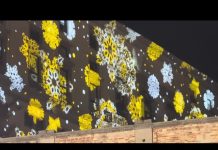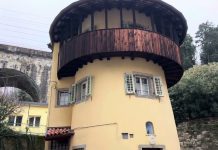by InTrieste
In the seaside town of Grado, archaeologists have uncovered three remarkably well-preserved wooden seawalls dating from the Roman and early medieval periods. The discovery, made during preventive excavations, is shedding light on how ancient coastal communities adapted to environmental changes — and how sea levels in the region have shifted over nearly two thousand years.
The structures, which date between the 1st and 6th centuries A.D., were unearthed by ArcheoTest Srl during investigations commissioned by the local water utility Irisacqua S.r.l. The work was carried out under the scientific supervision of the regional office for Archaeology, Fine Arts, and Landscape in Friuli Venezia Giulia, in collaboration with the National Institute of Oceanography and Experimental Geophysics (OGS) in Trieste, the University of Bologna, and the National Institute of Geophysics and Volcanology (INGV).
The findings, recently published in Scientific Reports, suggest that the seawalls once helped protect the settlement from coastal erosion and tidal incursions. Their analysis has allowed researchers to reconstruct ancient shoreline conditions and to trace the evolution of relative sea levels along the northern Adriatic — a region where human habitation and natural forces have long interacted.
“The coastal areas are among the most vulnerable to environmental change,” said Emiliano Gordini of OGS. “According to national data, about 30 percent of Italy’s population lives along the coast, and even under the least severe climate projections, sea levels could rise by roughly half a meter by the end of this century.” Such changes, he added, could lead to profound landscape transformations and damage to infrastructure in low-lying areas.
The study also shows that rising seas are not a new challenge. “Even in the past, variations in sea level significantly influenced how people lived along the coast,” said Dario Gaddi of ArcheoTest, who led the excavation. “Sometimes communities were forced to abandon their settlements, while in other cases they adapted by reshaping their surroundings. Grado is a striking example of this resilience — a Roman port and lagoon settlement closely connected to Aquileia and later to Venice.”
The excavation, conducted in 2021 near Grado’s ancient Castrum, revealed three distinct wooden palisades. The oldest, built between the 1st and 2nd centuries A.D., was composed of wooden planks driven into the ground to form a continuous barrier. It now lies about 60 centimeters below the current sea level, suggesting that at the time of construction, the shoreline stood on dry land. Researchers believe the structure was part of a large-scale Roman effort to reclaim land by filling coastal areas with construction debris and domestic waste, when sea levels were roughly 1.2 meters lower than today.
A second palisade, dated to A.D. 566 using tree-ring analysis, appears to have been constructed as a response to a gradual rise in sea level. The wood shows damage caused by Teredo navalis, a marine organism that infests submerged timber, indicating that by the mid-6th century, the waters had risen by at least 40 centimeters.
Fragments of a third, roughly contemporary palisade were also identified, likely built not as a seawall but to reinforce the defenses of the nearby Castrum.
“The multidisciplinary approach allowed us to build numerical models showing how glacial and geological processes affected sea level changes over the last 5,000 years,” said Daniele Melini of INGV. “These models help us interpret the archaeological evidence and better understand the ancient coastal environment.”
Today, Grado — often called the “Island of the Sun” — remains one of Friuli Venezia Giulia’s most distinctive coastal towns, its history deeply tied to the shifting relationship between land and sea. The newly unearthed seawalls, preserved beneath centuries of sediment, offer not only a glimpse into the town’s Roman past but also a timely reminder of how coastal societies have long grappled with rising waters.
Read the full study in Scientific Reports.





























